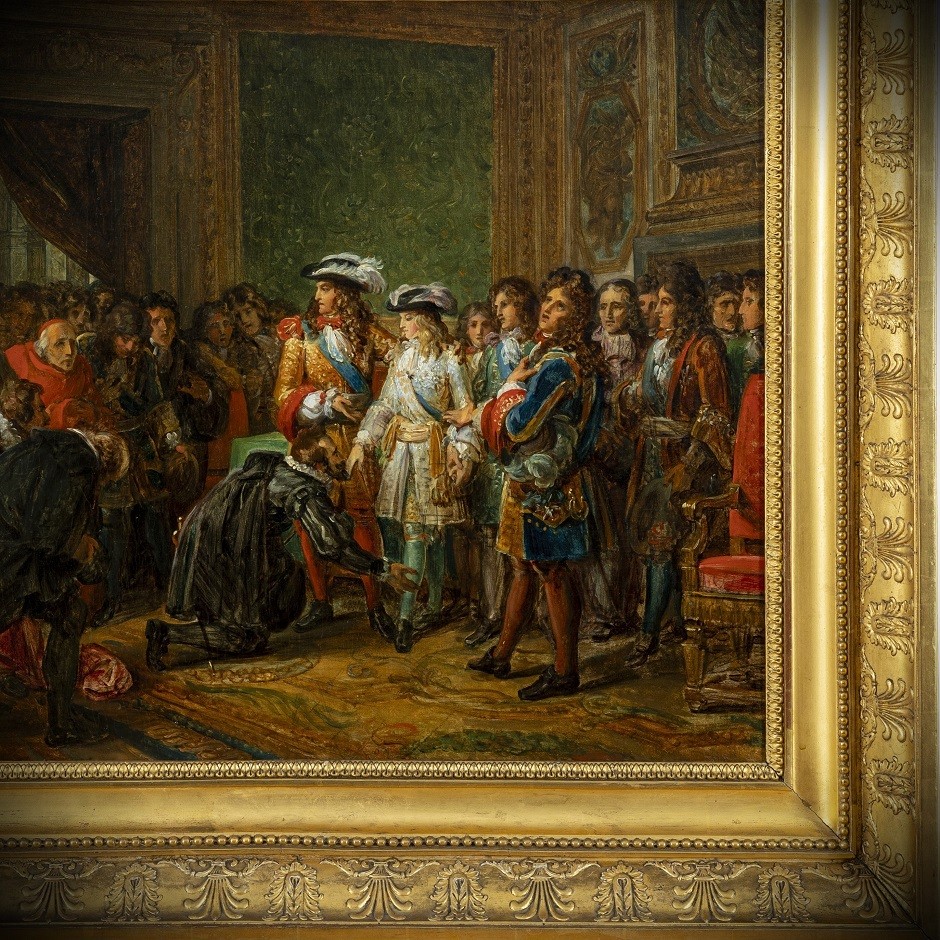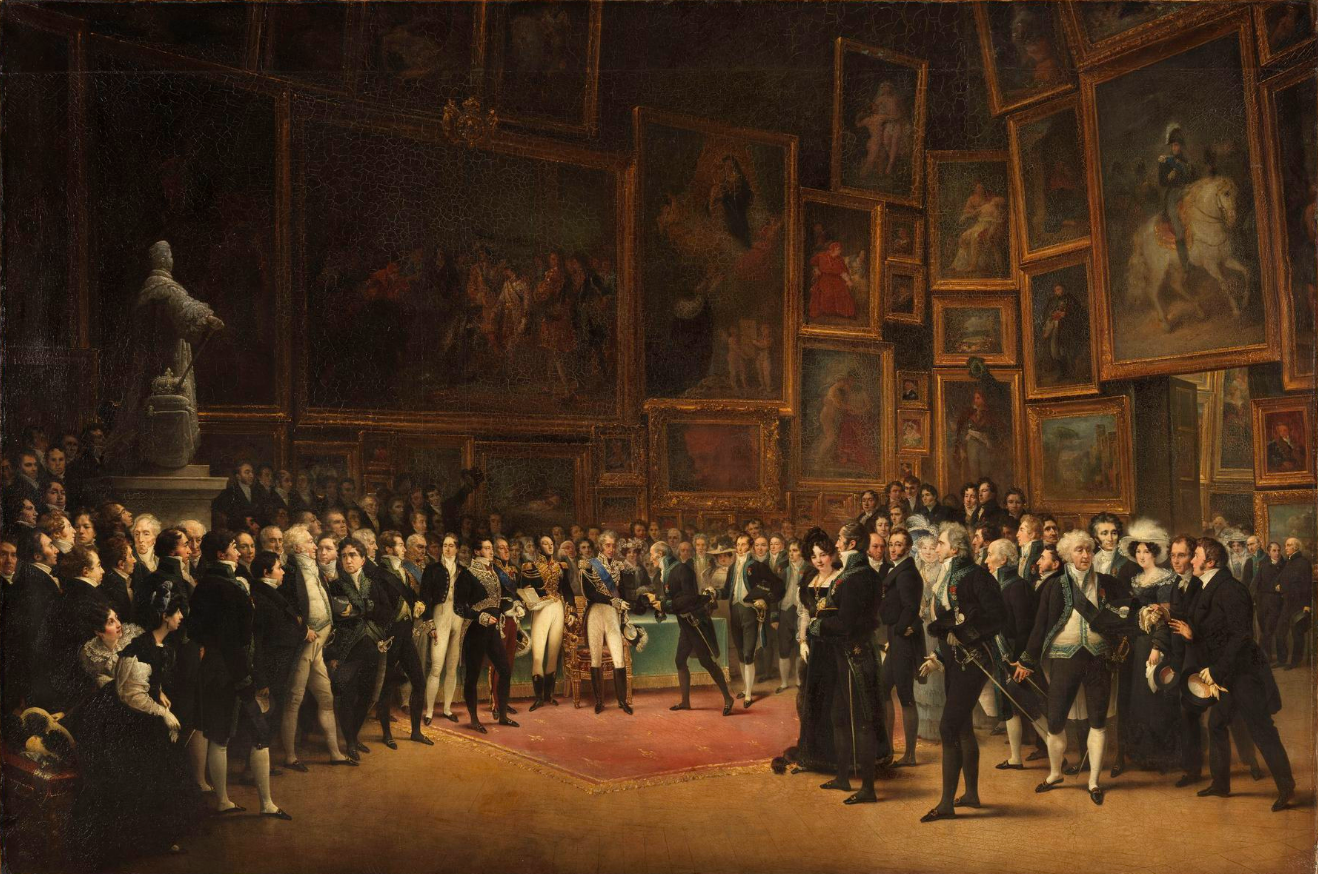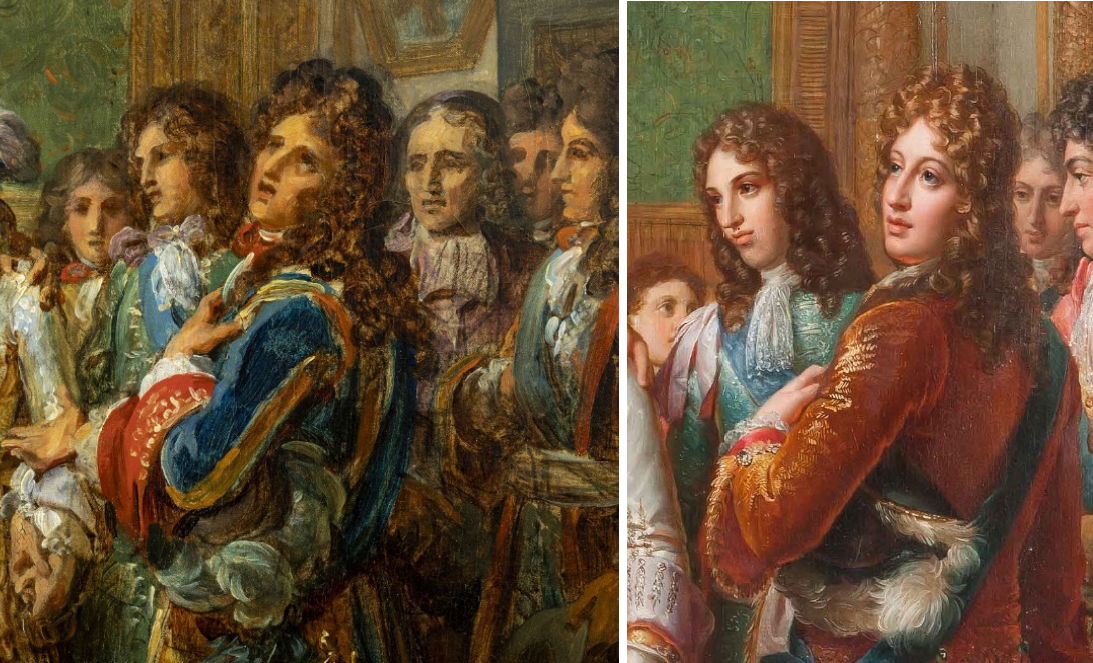Baron Gérard (1770-1837)
Demande d'informations
| Oil on canvas |
| 60 x 73 cm |
| Circa 1824 |
| Origin : Château de Bonnetable (Sarthe) |
More info
Baron Gérard's very large painting "The Proclamation of the Duke of Anjou, King of Spain under the name of Philippe V, November 16, 1700" was initially commissioned by Louis XVIII for the Council Room of the Palais des Tuileries.The Spanish expedition of 1823, aimed at restoring King Ferdinand VII to his throne, was surely the motivation.
Exhibited in Versailles since 1834 in the Salon du Grand Couvert, it is currently in storage at the Château de Chambord.

This work was presented at the Salon of 1824. Staged by François-Joseph Heim (1787-1865) in his painting: “Charles the background, while Sosthène I de La Rochefoucauld stands next to the King.
The event depicted takes place in the King's Cabinet, in Versailles, from where we can see the Hall of Mirrors in the doorway. The Duke of Anjou, second son of the Grand Dauphin, became King of Spain under the will of Charles II who died without an heir on November 1, 1700. The Spanish ambassador, the Marquis of Castel dos Rios, kneels before the future Philippe V that Louis XIV presents to him. The princes of the blood and dignitaries witness the scene.
Our painting is certainly the first modello presented by Baron Gérard to Sosthène I de La Rochefoucauld, director of Fine Arts, to validate its composition.
Indeed, the relatively precise palette but fiery writing, the important dimensions for a study and the differences with the final work go in this direction.
She reveals to us, for example, that the Grand Dauphin was first imagined with a more theatrical expression, wearing a blue frock coat rather than a red one.
For certain protagonists such as the Marquis of Castel dos Rios or the Apostolic Nuncio, it is the faces that have changed model.
We can assume that initially Baron Gérard would have used the engraving of Bossuet's portrait by Rigaud before taking inspiration from the original painting.
Corrections are also visible in the decor. Note the sun, emblem of Louis XIV, integrated into the woodwork at the top left of the painting which has been replaced by the king's figures.
Louis François Sosthènes I, Viscount of La Rochefoucauld, married Elisabeth Hélène Pierre de Montmorency (1790-1834), heir to the Château de Bonnetable.
An epistolary exchange from 1825 betrays the very courteous relationship he had with Baron Gérard and we can guess that the presence of this work at the Château de Bonnétable stems from this friendship.
Bibliography:
- MOULIN Monique, François GERARD history painter, unpublished manuscript, 1984
- GERARD Alexandre (1780-1832), Letters addressed to Baron François Gérard, history painter, by artists and famous people of his time. Volume 2 / 2nd edition, published by Bon Gérard, his nephew; and preceded by a notice on the life and works of François Gérard, and a story by Alexandre Gérard, his brother, 1886
Avis
Aucun avis n'a été publié pour le moment.










